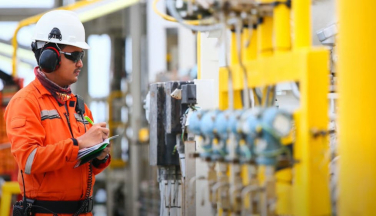A New, More Precise Approach to Varnish Testing
View the Chevron and Polaris presentation for full details


Plant maintenance engineers are constantly trying to manage risks and monitor operations to avoid downtime and equipment failure or damage. One of the biggest challenges is trying to measure varnish resulting from oil degradation in turbines, compressors, and hydraulic systems. Varnish is a major headache that can hinder equipment performance, or in the worst case cause costly damage if left unchecked. The problem is that you may not know if varnish has formed in a system until you start experiencing its effects – sticking valves, blocked filters, or sluggish performance, for example. Because varnish forms on metal surfaces within a system, it’s virtually impossible to measure the presence of varnish itself, short of taking the equipment apart. For that reason, mitigation efforts to date have focused on measuring varnish deposits or precursors in the oil, the best indicator so far of the likely extent of varnish in the system.
The current standard for varnish measurement is the Membrane Patch Colorimetry, or MPC, test under the ASTM D7843 standard. In the MPC test, a sample of in-service oil is run through a very fine membrane patch, which is designed to capture insoluble contaminants. Any substances that are polar (attracted to metal), sticky, or larger than around 0.4 or 0.5 microns will stick to the patch and give it color, which is analyzed by a spectrophotometer. The color correlates to the extent of varnish precursors present in the oil, meaning the darker the color, the higher the varnish potential.
That’s about as far as the MPC test goes. It tells you what’s in the oil, and an experienced lubricant analyst can extrapolate from that data whether you have or will soon have varnish in the system.
Now, Chevron has teamed up with Polaris Laboratories, one of our independent LubeWatch® Oil Analysis Program partners, to develop a testing method that goes beyond the MPC and ASTM standard. Our goal is to give lubrication and maintenance engineers more intelligence as to what may be floating around in their oil and deeper insight into the root causes of varnish. The test relies not only on the color analysis of the patch, but also on changes to the weight of the patch, and how the accumulated substances respond to a polar solvent. This helps lab analysts distinguish between organic varnish precursors and insoluble hard particles, or inorganic compounds that may or may not contribute to varnish. It will not only show the standard varnish potential that the MPC test would uncover, but also provide more granular, detailed information about the types of varnish that may be present in your system. You can have greater confidence in the test results and make a better-informed decision on remediation measures, whether that includes increased filtration or a cleaning out of the system.
Earlier this month, Chevron hosted a webinar with the Polaris team, in which we further explained this new varnish testing methodology and its benefits compared to the conventional approach. If you’re concerned about varnish or simply want to be kept up to date on advanced equipment protection solutions, we strongly encourage you to view the webinar.
You may also qualify to receive a free test kit. To find out if you qualify, simply fill out our information form and answer a few questions about your operation.
03-23-2022

























